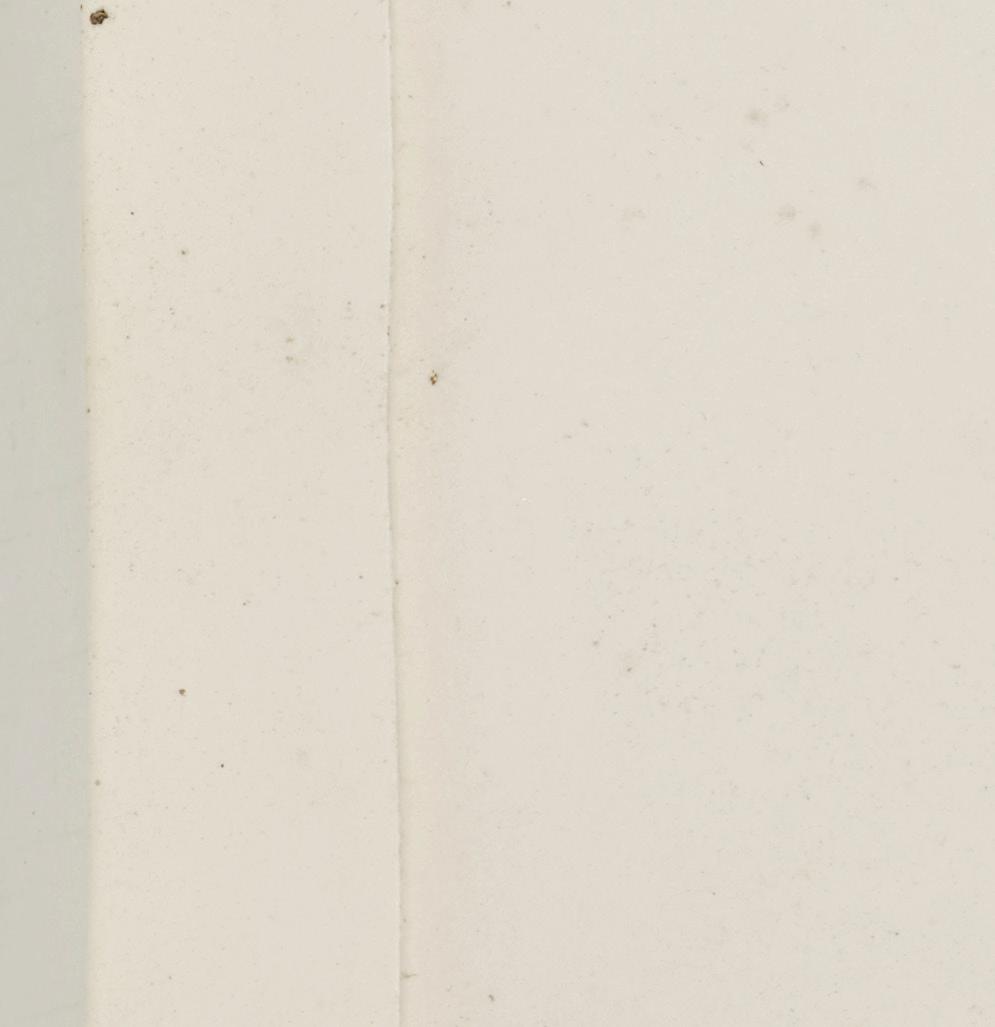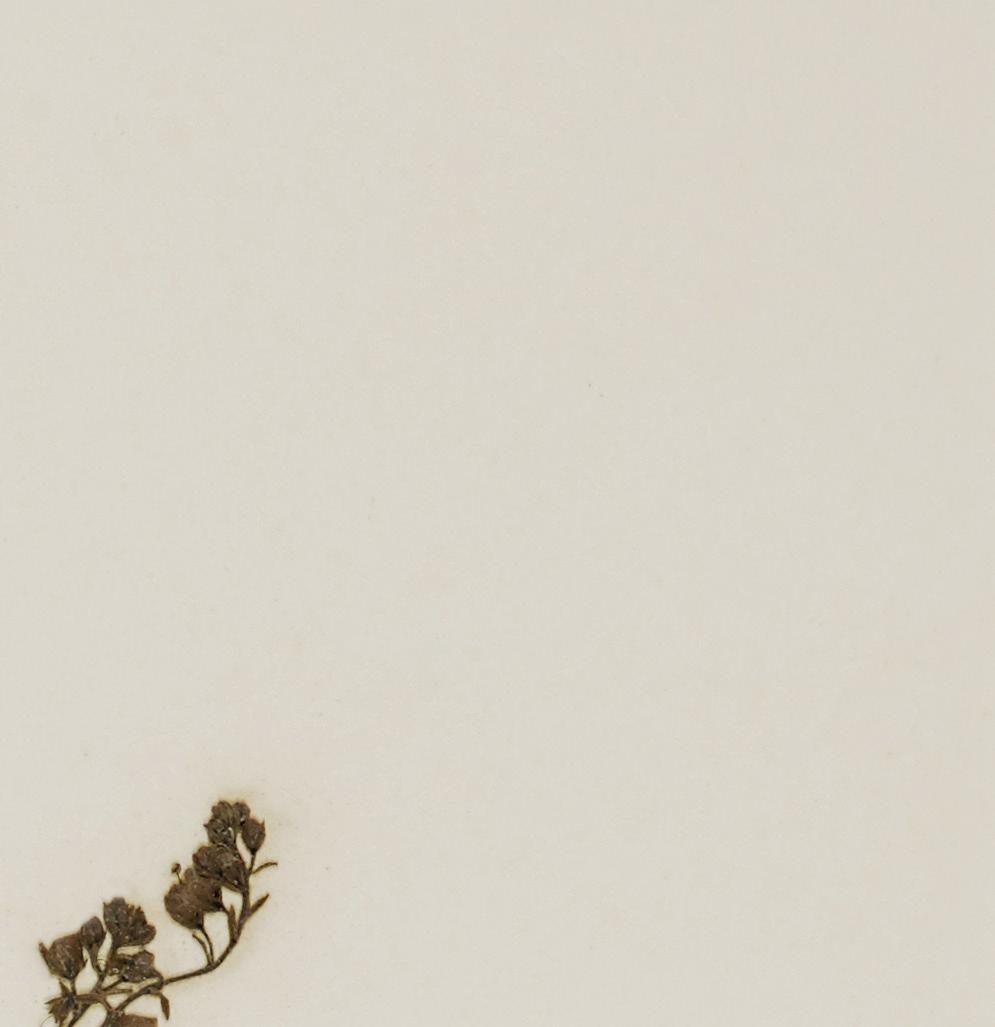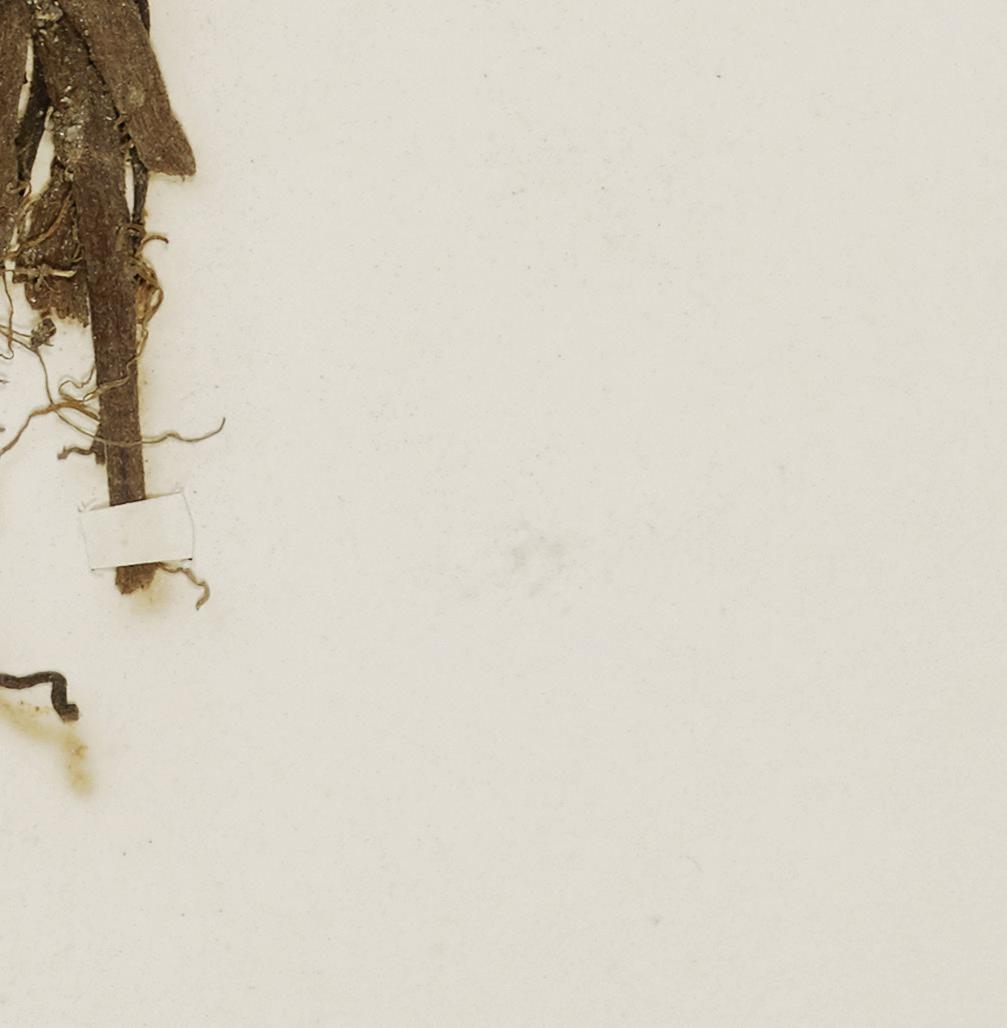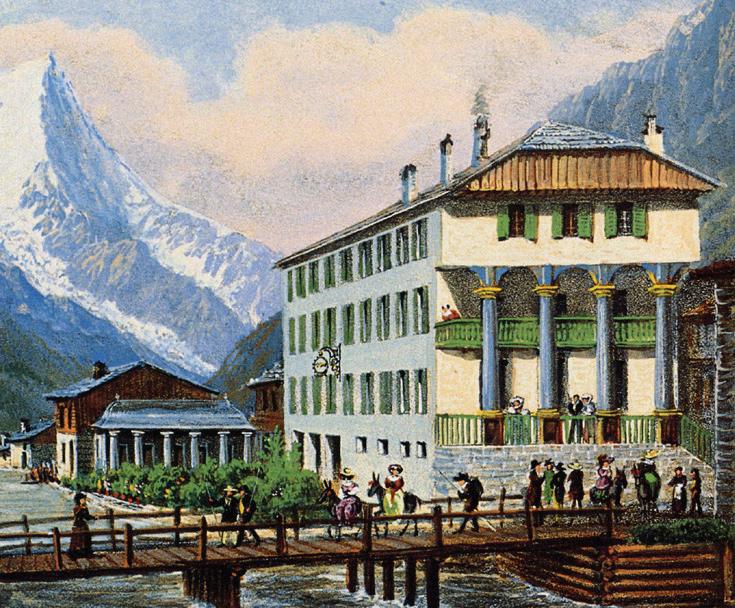
































































edited and introduced by david s . ingram and stephen wildman
volume one : facsimile































































































































































































































































































































































John Ruskin, Glacier des Bossons, Chamonix, 1849, pencil, ink, ink wash and bodycolour.
A view looking down the valley of the Arve towards Les Houches, this is inscribed on the reverse: ‘Glacier des Bossons from SE Window/Union’. Diary entries of 15 and 16 June 1849 record: ‘Drew after dinner from window at Glacier des Bossons’, and ‘I have got on well with my drawing of the Glac[ier] des Bossons’.
Published here for the rst time is an intriguing example of the diversity of John Ruskin’s interests. Geology and mineralogy had been his earliest youthful passions, his editor and biographer E. T. Cook declaring that ‘No acquisition of later years – not his most radiant Turner or choicest manuscript – gave him pleasure so keen as he felt in the possession of his rst box of minerals, and no subsequent possession, he says, had so much in uence on his life.’1 He formed signi cant collections of minerals and shells, much of which survive and have been the subject of study.2 Recent research has also been undertaken on his interest in botany and its related published works such as Proserpina (1875-86), but one signi cant item has been hitherto overlooked – a collection of 46 pages of pressed owers, with accompanying manuscript notes, bound in an album with the title Flora of Chamouni 1844, measuring 11 x 9¾ inches (28 x 25 cm).
No mention of this can be found either in Ruskin’s published writings or his manuscript diaries and letters, and it is not cited in the Library Edition (The Works of John Ruskin, ed. E. T. Cook and Alexander Wedderburn, 1903-12).
Its presence in the Whitehouse Collection – formerly held at Bembridge School, and since 1996 in the Ruskin Library, now re-named The Ruskin, at Lancaster University – suggests
1 The Works of John Ruskin, ed. E. T. Cook and Alexander Wedderburn (George Allen, London, 39 vols., 1903-12), hereafter Works; vol. XXVI, Deucalion, p. xix.
2. Janet Barnes, ‘The Mineral Collection of John Ruskin in the Ruskin Gallery, She eld’, UK Journal of Mines & Minerals, no. 11, Spring/ Summer 1992, pp. 26-29; Peter S. Dance, ‘Ruskin the reluctant conchologist’, Journal of the History of Collections, vol. 16, no. 1, 2004, pp. 35-46.
likely provenance from the Brantwood sale of 1931, at which John Howard Whitehouse, acolyte of Ruskin and founder of Bembridge School, acquired the bulk of his collection, but there is no evidence to con rm this. The album has rarely been mentioned in the Ruskin literature, although it has appeared in displays at the former Ruskin Library, notably Ruskin’s Flora (2011).3
Such unpublished material is not quite unique. Two sets of botanical books, British Phænogamous Botany (W. Baxter, 2nd edition, 1834-43) and English Botany (J. E. Smith & J. Sowerby, 2nd edition, 1832-40), interleaved with copious annotations by Ruskin, surfaced only in 2015. Previously lost to sight, these have proved to be of considerable importance, described by David Ingram in a preliminary survey as ‘a missing link in the chain of Ruskin’s botanical studies.’4 The Flora represents another link in that chain, although the combination of gathered owers and notes speaks less of a focused botanical study and more of an additional record of an idyllic and fruitful holiday, in the company of his parents. Ruskin’s commissioning of two professionally assembled herbiers, or albums of pressed owers, from the young Venance Payot in Chamonix, is detailed in Stephen Wildman’s chapter, ‘Ruskin and Chamonix’, while the
3. David [S.] Ingram and Stephen Wildman, Ruskin’s Flora: The Botanical Drawings of John Ruskin (Ruskin Library and Research Centre, Lancaster University, 2011).
4. David [S.] Ingram, Ruskin’s Botanical Books: Re-ordered and Annotated Editions of Baxter and Sowerby (The Guild of St George, 2016).

Carle Vernet, Les Voyageurs Anglais, c. 1830, lithograph
A gently mocking depiction of post-Napoleonic tourism, showing how the Ruskin family might have travelled
context and signi cance of the Flora are discussed by David Ingram in his ‘Collecting Days’ Editor’s notes, and in ‘Ruskin and Botany’.
John Ruskin took his nal examinations at Oxford University in April 1842, receiving an honorary double fourth degree – by no means a disappointment, being the highest that could be awarded in the circumstances of having spent a year away from Oxford in
5. Attested by Ruskin’s biographer W. G. Collingwood, as cited in Tim Hilton, The Early Years 1819-1859 (Yale University Press, 1985), p. 69
1840-41 5 Following a three-month celebratory tour, focusing on Chamonix, he concentrated on writing the rst volume of Modern Painters, whose publication in 1843 marked the beginning of his career as a critic. By 1844, travelling abroad again, the Ruskins (John and his parents, John James and Margaret) had already visited the Swiss Alps four times, sometimes accompanied by other family members.
That Chamonix was not actually in Switzerland was of little consequence: Ruskin’s concern was for the physical geography (and geology) of place, without any restriction of national or political boundaries. His strictures on the simple innocence of Swiss pastoral life would implicitly include Chamonix and, later, Mornex near Geneva. What is now known as the Haute Savoie (a department in the Auvergne-Rhône-Alpes region) belonged historically to the House of Savoy, becoming part of
the Kingdom of Sardinia in 1713 and then ceded to France in 1860. Ruskin considered this simply as ‘the peaceful present of a few crags, goats, and goatherds by one king to another’6, seeing it as potentially ‘an immense bene t to Savoy … A few millions of francs judiciously spent will gain to Savoy as many millions of acres of fruitfullest land and healthy air instead of miasma.’7 He even stuck to the old name in his 1863 lecture, ‘On the Forms of the Strati ed Alps of Savoy’.
Stephen
Wildman and David S. Ingram


John Ruskin and John Hobbs, Mer de Glace, Chamonix, 1849, daguerreotype. Possibly the image recorded by Hobbs in his diary for June 22nd-23rd, 1849 as ‘a beautiful Dag[uerreotype] of a piece of glacier’
Hobbs, trying to keep up with Ruskin and Couttet in search of a good view of the Aiguilles du Midi—‘as I had my arms full with the Daguerreotype machinery it was no joke I assure you, jumping from stone to stone’.42
On both outward journeys of their long stays in Venice over 1849–50 and 1851–52, Ruskin and his new wife E e spent several days in Chamonix. In 1849 this was between October 14th and 17th. ‘It is most amusing,’ E e wrote to her brother George, ‘to see the surprise and delight of the people at the return of John. They seem fond of him and they pay me pretty little compliments.’43
Two years later they were there on August 13th to 15th, still loyal to the Hôtel de l’Union. Accompanied by Charles Newton and the Rev. Daniel Moore of the Camden Chapel, Camberwell, and in spite of poor weather, Ruskin managed some of his favourite
long walks, to the source of the Arveyron, Montenvers and the Glacier des Bossons. E e also made it by mule up to the Mer de Glace, spending the night with John in the travellers’ refuge; ‘it is a splendid day’ she noted, ‘& I have been sitting outside the house working on the bank surrounded by goats and watching the people coming up in such quantities as makes it quite an Exhibition of the Nations.’44 ‘I love the place better than ever,’ Ruskin told his father, ‘and think it lovelier, and I don’t know that I was ever sorrier to leave it.’45
Sadly, by the time of his next visit in the summer of 1854 the ill-fated and famously unconsummated marriage had ended in annulment, after E e left Ruskin for the painter John Everett Millais (whom she married in that year). A return to Chamonix was therefore hugely welcome, as recorded in his diary for July
42. John Hobbs, Manuscript Diary, Morgan Library, New York (MA 2539). Charmingly, stuck to its last page is a pressed ower, with the inscription ‘Gentian from the Alps at Chamouni / collected at this date / August 1849’; illustrated in David Hill, ‘Ruskin Drawings at King’s College, Cambridge: #4 The Mer de Glace from the Montanvers Hotel above Chamonix’, Sublime Sites, https://sublimesites.co/2018/ 12 / 06 /ruskin-drawings-at-kings-college-cambridge- 4 -the-mer-deglace-from-the-montanvers-hotel-above-chamonix/
43. Mary Lutyens (ed.), E e in Venice (Pallas Athene, London, 2003), p. 47.
44. Ibid., p. 181.
45 Works, vol. XXXVI, Letters, p. 117 (August 16th, 1851).

10th, the day he arrived: ‘Thank God, here once more, and feeling it more deeply than ever. I have been up to my stone upon the Breven, all unchanged and happy.’46 A fortnight’s stay included both introspection and careful, if sometimes romantic, botanising: ‘Note that the wild roses, here in Chamouni, have the most perfect perfume I ever felt, like sweet briar’ … ‘Yesterday up at the old place under Aiguille Blaitière and on the Charmoz; the hill up to the glacier covered with the pink moss ‘Cyllene Acaulis’? and a crested purple ower ‘Pedicularis Rostrata’? mixed with small but exquisitely coloured forget-me-not and white saxifrage’.47 Returning a month later, more time was spent on geology than botany. On these visits in 1854, and again in the summer of 1856 (between July 26th and August 18th), Ruskin set his manservant Frederick Crawley (successor to Hobbs from late in 1852) to make daguerreotypes of subjects in Chamonix— as many as sixteen in 1854—and in Basel, Thun and Fribourg, more than twenty probably made in 1856.48 Two of the most beautiful and dramatic, Aiguilles, Chamonix and Aiguille Verte
46. Diaries, vol. II, p. 498.
47 Ibid., p. 499 (July 20th and 22nd).
and Aiguille du Dru, Chamonix, are dated on the mounts by Crawley to 1854.
Just as earlier visits had contributed to themes within the rst two volumes of Modern Painters, so the extended stays of 1849 and 1854 bore fruit in the next two, published together in 1856 In Chapter III of Volume III, ‘Of Turnerian Light’, Ruskin uses an experience at Chamonix, ‘on a warm sunny morning, about eleven o’clock, the sky clear blue’, to demonstrate the extreme di culty—although Turner comes close—of capturing on paper or canvas what the eye can see: ‘it will thus generally be found impossible to represent, in any of its true colours, scenery distant more than two or three miles, in full daylight. The deepest shadows are whiter than white paper.’49 No other writer on art, or landscape, had ever made such heartfelt empirical observation. Chamonix necessarily gures in Chapter XIII, ‘Of the Sculpture of Mountains:—Secondly, the Central Peaks’, as part of the system of rock whose ‘jagged and spiry outlines’ lead the eye towards Mont Blanc. Ruskin balances geology against divine
48. Jacobson, Carrying O the Palaces, 2015, cat. nos. 234–246, 264–306.
49 Works, vol. V, Modern Painters III, pp. 54–55

Collecting, Pressing and Drying Plant Specimens in the 19th century
The equipment of an 1844 collector of plants for pressing was relatively simple,28 although the individual items may have been bulky or awkward to carry, especially in the Alps. This is unlikely to have concerned John Ruskin, however, for as is clear from his Diary entries for June 1844,29 and his partial autobiography, Præterita, not only was he usually accompanied by a most experienced Alpine guide, Joseph Couttet, but also by his ‘man’, (John) ‘George’ Hobbs. The former would probably have been far too grand to be used as a porter, but no doubt George would have been deputed to carry whatever equipment was required.
Herborizing Box or Vasculum
The most important item of equipment would have been a container—a herborizing box or vasculum30—for carrying the specimens without crushing them. The term ‘vasculum’, still in use today, was rst coined by Linnæus, in his book Philosophia Botanica (Stockholm, 1751, page 293). Among the items he recommended his students to take with them when collecting plants, was a ‘Vasculum Dillenianum’, a phrase derived from the Latin for a small vessel and the Latinized name of the German
28. Graves, G., The Naturalist’s Pocket Book or Tourist’s Companion, (Longman, Hurst, Rees, Orme and Brown, London, 1818), pp. 278–301. See also Graves, G., The Naturalist’s Companion, (Longman, Hurst, Rees, Orme and Brown, London, 1824); Verlot, M. B., Le Guide du Botanist Herborisant, (J. B. Baillière & Fils, Paris, 1865), pp. 26–104; Larsen, A., ‘Equipment in the Field’, in N. Jardine, J. A. Secord & E. C. Spary, eds., Cultures of Natural History, (Cambridge University Press, Cambridge, 1996), pp. 358–377
29. Evans, J. & Whitehouse, J. H., The Diaries of John Ruskin, Vol. 1,
botanist, Johan Jacob Dillenius, friend of Linnæus and Professor of Botany at Oxford from 1734 until his death in 1747. The earliest plant collecting boxes of the seventeenth century may have been much simpler, merely being wooden candle boxes, or lighter and more convenient cylindrical, tin-plated metallic candle boxes. The latter were usually tted with a hinged lid, secured by a hasp and loop, and had hanging lugs, which would have provided anchorage for the two ends of a shoulder rope or strap.
Later, the vasculum became a standard piece of botanical equipment (Allen, 1959) and in Britain was usually an elongated metal box, elliptical in section, tinned or lacquered (usually black or green) inside and out to prevent rusting, its hinged side opening secured with a sliding bolt or some other xing device (ill. overleaf). The vasculum was often also tted with a shoulder strap and/or wire handle. Graves (1818), however, suggested an improved ‘herborizing box’ which had, in addition to a side opening, ‘one end … to draw o , by which larger specimens can be admitted without risk of breaking’. European vascula were a little di erent from those used in Britain, often being cylindrical in section and tted with two or more compartments (ill. p. 43). Both in Britain and Europe, the more sophisticated versions were sometimes decorated with painted designs.
The early British vascula were very small. For example, the
1835–1847, (Clarendon Press, Oxford, 1956), pp. 275–296; Works, vol. XXXV, Præterita II, p. 343 (443) and pp. 328–329 (440–442).
30. Allen, D. E., ‘Origin of the Vasculum’, Proceedings of the Botanical Society of the British Isles (Proc. BSBI ) 1957, 2, p. 324; Baker, H. G., ‘Origin of the Vasculum’, Proc. BSBI, 1958, 3, pp. 41–43; Allen, D. E., ‘The History of the Vasculum’, Proc. BSBI, 1959, 3, pp. 135–150; Allen, D. E., ‘Some Further Light on the History of the Vasculum’, Proc. BSBI, 1965, 6, pp. 105–109
Opposite: The fully equipped botanist: frontispiece illustration to Bernard Verlot, Le Guide du Botaniste Herborisant, 1865 Note the gaiters, wideawake hat, long-handled trowel, magnifying glass, and pack for a vasculum and other necessities

Three British vascula from the collection of the Royal Botanic Garden, Edinburgh. The two black-painted tin ones with side lids only are probably late nineteenth century, the rear one by A. H. Baird of Edinburgh and that in the middle by Baird & Tatlock, at that time of Glasgow, Edinburgh, Manchester and Liverpool.
The green vasculum, with a side and end lid, is probably twentieth century, maker not known
Birmingham botanist William Withering, an early proponent, writes: ‘Carry them [plant specimens] home in a tin box nine inches long, four inches and a half wide; and one inch and a half deep. Get the box made of the thinnest tinned iron that can be procured; and let the lid open upon hinges.’31 Such boxes could, therefore, easily be carried in a large pocket. By 1840, however, vascula had become quite bulky, being up to twenty inches long, eight to nine inches wide and ve inches deep.32 Specimens may have been kept fresh while collecting by putting wet moss in the vasculum or lining it with a damp cloth or paper. Indeed,
31. Withering, W., An Arrangement of British Plants: according to the Latest improvements of the Linnæan System, to which is pre xed, an Easy Introduction to the Study of Botany; Illustrated with Copper Plates, (printed for the author by M. Swinney, Birmingham, 1776), ‘Introduction’, pp. xlvii–xlxi; Ruskin possessed a third edition of the book (1796), see Dearden (2012), cat. no. 2900. See also Withering, W., A Botanical Arrangement of all the Vegetables naturally Growing in Great Britain (1st Edition, printed by M. Swinney, for T. Cadel and P. Elmsley
Withering states that; ‘If any thing happens to prevent the immediate use of the specimens you have collected, they will keep fresh two or three days in the box, much better than putting them in water.’
It is not known whether Ruskin actually used a vasculum during the 1844 Chamonix visit, but his collecting notes on page 17 (June 10th) of the Flora suggest that he used a container of some sort, for he states there that: ‘The meadows … were always covered with the bell gentian and globe Ranunculus … but I only gathered these grasses [sic], for fear of crushing my primulas and
in the Strand, and G. Robinson, in Pater-Noster-Row, London, 1776).
32. Greville, R. K., ‘Directions for Collecting Botanical Specimens and Preserving Them for the Herbarium’, Annual Report of the Botanical Society of Edinburgh, 1838–39, pp. 80–89. Although Ruskin possessed two of Greville’s publications —see Dearden (2012), cat. nos. 1130 and 1131—he is not known to have possessed this paper.
33. In my experience everything from sandwich boxes to high crowned hats have at some time been pressed into service to serve as vascula.

A European vasculum—a Boîte d’herborisation—with two compartments, from Bernard Verlot, Le Guide du Botaniste Herborisant, 1865, (Fig. 9)
saxifrages’. Since the vasculum had become a standard piece of equipment by 1844 it is most probable that he did use one, or if not a container 33 that did duty as one.
The vasculum went on to have a long life: I remember using one while studying botany at school in the late 1950s, and then while an undergraduate in the early 1960s, but by the mid 1960s vascula were being replaced with the more prosaic, but in nitely more convenient, plastic wallet or polythene bag. With concern for pollution of the oceans by plastics, however, perhaps metal vascula will soon make a comeback.
The second most important pieces of eld equipment were— indeed still are—a notebook and a writing instrument, in order to record exactly where and when each plant specimen was collected, the nature and geology of the terrain, the colour of the owers (for this may be lost during drying) and other details not intrinsic to the specimen itself but likely to be of value both to the collector and other botanists wishing to study the
species in question. As Graves (1818) emphasizes, it is this kind of information, which must be written down while still fresh in the mind, that transforms what would otherwise be no more than a souvenir of a day in the eld into a scienti c botanical specimen.
Ruskin does not appear to have followed Graves’ example to the letter, however, for his plant collecting notes were sometimes rather sketchy, even when taken together with information recorded in his Diary for the day in question. Using writing equipment in the Alps in 1844 cannot have been easy, so it is not surprising that one gets the impression when reading Ruskin’s collecting notes that they were usually written up from memory, either soon after returning to his lodgings or very much later with the aid of his Diary notes. Sometimes important information was forgotten completely. For example, in the collecting notes on Ruskin’s page 11 of the Flora he writes: ‘I cannot nd the name of the plant c. and I have lost the [‘to’ crossed out] name of the locality from which I obtained the other potentilla, a.’ On page 36, he writes of two specimens: ‘Also from the side of La Côte, June 21. I was so fatigued when I came down that evening that I fell asleep in writing; and never noted the exact localities.’

John Ruskin, Star Gentian [possibly Spring Gentian, Gentiana verna L.].
Image from the Diary notebook of 1849, ‘Star Gentian carried to Chambery and drawn there 3rd May’
collecting day one : june 5th , 1844
From the Diary: May 14 th – June 5 th, 1844 1
After a long and arduous journey from Dover, including a nal hair-raising descent of the Jura with a drunk postilion in charge, the Ruskin entourage, including a somewhat downhearted, twenty- ve-year-old John Ruskin, nally reached Geneva on May 31 st 1844 . At last they were within striking distance of Chamonix, and on June 1 st Ruskin’s spirits begin to lift and he enthusiastically recalls his rst 1844 encounters with the rich and exquisitely beautiful Alpine ora:
‘The day before [May 30 th] I should remember, for the walk I had at St Laurent … The Dôle rose in a long red ridge … above a range of pine 2 covered hills … About lay the grey concave blocks of the Jura limestone, slippery with wet. Large black and white snails had come out everywhere to enjoy the rain. In the crevices of the rocks the lily of the valley 3 grew profusely, accompanied by the wild strawberry and cowslip. 4 I found a root of the star gentian 5 [ill. opposite], and kissed it as a harbinger of the Alps.’
The next morning (May 31 st), he recalls, just beyond Les Rousses, he ‘had a fragment of a lovely walk … among the gentians. I never saw them in such profusion before nor of such blue: it was as if Heaven had been left desolate and grass had grown on it.’
By June 5 th the Ruskins were very close to Chamonix, and John Ruskin had started to collect owers for his Flora, writing in his Diary on that day:
‘ST. MARTIN’S. 6 Two of the most delicious and instructive days I ever spent in my life. Note, rst, of the two purple owers dried today, a round bushy one, 7 grows
1. This and all subsequent 1844 Diary summaries and quotations are based on the manuscript Diary for 1844 held in the Whitehouse Collection, The Ruskin, Lancaster University (MS4) and on Evans, J. & Whitehouse, J. H. (1956), The Diaries of John Ruskin, Vol. 1, 1835–1847 (Clarendon Press, Oxford), pp. 275–296.
2. Presumably a generic term for conifers of various sorts.
3 Convallaria majalis L.
4. Respectively, Fragaria vesca L. and Primula veris L.
5. The species shown opposite, which Ruskin labelled as ‘Star gentians’ in 1849, appears to be what is now usually known as Spring Gentian (Gentiana verna L.), which owers from April/May until August, and has ve large, clear blue petal-like ower lobes.
6. Presumably at Pont de St. Martin, close to Sallanches, c. 27 km from Chamonix.
7. Ruskin’s page 1 of the Flora of Chamouni: ‘GLOBULARIA CORDIFOLIA’ (sic).
collecting day one
in enormous quantities near and about the top of Montagne Bénit; the other more scattered, 8 though in profusion, near the top, and more sparingly half way down the oxalis acetosella, 9 in considerable quantities under the rocks, and in the woods, about two thirds of the way up; the anemone nemorosa 10 more sparingly a little lower. The yellow ower, 11 of which only one bad specimen is dried, in vast quantities high and low. On the summit itself the bell gentian 12 grew in mossy knots, everywhere, of luxuriant size, scattered, though not in such profusion as far as half way down. The star gentian very rare at the top, thickly scattered below with the other.13 Common crowfoot, daisy and dandelion, 14 up to the top. In the pastures below, the globe ranunculus 15—yellow— mixed in profusion with the purple orchis.16 The white plant, No. 1 , 17 very far down in the woods; No. 218 higher up.’
Editor’s botanical note
The area Ruskin visited on June 5th would have been composed mainly of limestone, a calcareous rock. The rocky soils would, therefore, probably have had an alkaline pH (above 7), although in largely organic soils made up of accumulated dead plant remains, as in wooded areas or deep, sometimes boggy hollows, the pH
may have been neutral (pH 7) or even acidic (below pH 7). These patterns are re ected in the pH preferences of the eight species, one collected by his mother, which represent the expedition of June 5th, 1844 in his Flora of Chamouni
8. Ruskin’s page 3: ‘SOLDANELLA ALPINA’ (sic).
9. No pressed specimen.
10 Anemonoides nemorosa (syn. Anemone nemorosa L.),, Wood Anemone; no pressed specimen.
11. Ruskin’s page 2: ‘DRABA AZOIDES’ (sic).
12. Verso of Ruskin’s page 4: ‘GENTIANA ALPINA’ (sic).
13. Presumably verso of Ruskin’s page 4: ‘GENTIANA ALPINA’ (sic).
14. Respectively: Ranunculus sp. (a Buttercup); Bellis perennis L. (Daisy); a member of the complex group now referred to as Taraxacum
sect. Taraxacum F. H. Wigg; no pressed specimens of any of these.
15. Trollius europaeus L. (Globe ower); no pressed specimen.
16. Possibly Orchis mascula (L.) L. (Early Purple Orchid); no pressed specimen.
17. Presumably Ruskin’s page 1: ‘MYANTHEMUM BIFOLIUM’ (sic).
18. Probably Ruskin’s page 3: ‘Gnaphalium dioicum’ (sic), in which the male ower-heads of this dioecious species appear white.
collecting day one : ruskin ’ s flora page 1
Transcript of Ruskin’s page 1 19
myanthemum bifolium
Muguet a deux feuilles20
The two specimens, a & b,21 were gathered on the 5th June, 22 among the woods which clothe the lower slopes of the Mon (du Reposoir?)23 which rises on the right in approaching Cluse from Bonneville by the old road. The plant seems to love sloping banks, growing chie y beside the hollow paths cut or sawn out of the gravelly soil by the dragging down of the pinetrunks. These, to the number of 11 or 12 , are bolted together by the extremities, and are drawn down the steep sandy slopes by a single horse.
Vide large collection, Vol 3 238 24
Editor’s note on specimen
‘
myanthemum [sic] bifolium’ Maianthemum bifolium (L.) F. W. Schmidt (May Lily) Asparagaceae (syn. Convallariaceae; Asparagus family)
May Lily was once thought to belong to the large Lily family (Liliaceae), but as a result of analysis using modern technology has recently been re-assigned to the family Asparagaceae, a group which also includes Wild Asparagus, Lily of the Valley and Solomon’s Seal.
This delicate plant is a relatively low, creeping (by means of underground stems called rhizomes), hairless perennial, which often carpets the ground on hillsides at altitudes of c. 1000 to 2100 m. It prefers shady, usually wooded, slightly acid soils25 (pH
lower than 7) rich in organic matter. Each stem normally bears two small scale-like leaves at its base and higher up, two alternate and much larger, smooth-edged, heart-shaped leaves. The white owers, which appear from May–June/July, are borne in a short spike (raceme) at the tip of the stem and are fragrant. They are relatively small (c. 4–6 mm diameter), with four tepals (petal-like structures which function as both sepals and petals) which, when open, resemble a re exed four-pointed star. The fruits are small red, spherical berries, c. 4–5 mm diameter.
19. In transcribing Ruskin’s collecting notes on this page and all subsequent pages, I have left Ruskin’s spellings of all words, including place names, as they were written, unless indicated otherwise in square brackets. Also, I have not inserted any new words or punctuation marks, unless indicated otherwise in square brackets. I have, however, omitted some pen marks where it was clear to me that these were de nitely not intended as words or punctuation marks. Where I was uncertain whether a mark was intended as a comma or a full stop, I have used my judgement in deciding which would be most appropriate, given the context.
20. = Lily of the valley with two leaves.
21. Not actually labelled a & b.
22. See also Diary for June 5th, above.
23. Possibly Chaîne du Reposoir, but may in fact be Chaîne du Bargy.
24. It is not known which ‘collection’ this refers to.
25. Although the place where this plant was collected is in the limestone region of the Alps, the largely organic soil of the woodland oor may well have had a slightly acidic pH.
collecting day one : ruskin ’ s flora page 2
Transcript of Ruskin’s page 2
draba azoides
Drave faux. aizoon26
This plant was growing, June 5 th, in enormous quantities about the Lac Benit and on the bare turfy summits under the great precipice of the Mont du Reposoir, associated chie y with the Soldanella, Potentilla, & large bell gentian. Vide notes in journal.27 I found it afterwards frequently in the same situations—but never in such profusion
Editor’s note on specimens
‘ draba azoides ’ Draba aizoides L. (Yellow Whitlow Grass) Brassicaceae (sometimes referred to as Cruciferae; Cabbage family)
This bright owered, low, tufted, hairless perennial prefers calcareous soils,28 in rocky or stony habitats at altitudes of c. 2500 to 3600 m. The leaves, which are clustered in a basal rosette, are linear to lanceolate in form and edged with sti bristles that point towards the tip. The yellow owers, which appear from March to May/June, are borne in clusters on upright stems (c. 10 cm). Individual owers are tiny, c. 5–7 mm diameter, and have four
oval petals arranged in the form of a cross (hence the alternative family name). The whole ower head elongates as the fruits (capsules; not included with specimen) develop and dry out, each capsule having the form of a beaked ellipse, c. 5–12 mm diameter. A specimen of this species appears in Venance Payot’s Herbier des Alpes,29 p. 11
pinguicula
Below the specimen of Draba azoides are two unlabelled specimens of Butterwort (Pinguicula spp.), members of the Lentibulareaceae (Bladderwort and Butterwort family of insectivorous30 plants). The specimens are not identi ed or described, however, until
Ruskin’s page 30 of the Flora (q.v.),31 where it becomes clear that they have white owers and are therefore Pinguicula alpina L. (Alpine Butterwort).
26. = drave, a plant from the Cabbage family + faux aizoon, a plant resembling but not belonging to a member of the tropical and subtropical Stone-plant family (Aizoaceae).
27. See Diary for June 5th, above.
28. A soil with a high content of calcium carbonate, normally with a pH of 8 or higher, as would have been the case about Lac Bénit.
29. V. Payot, Herbier des Alpes (Les Éditions de l’Amateur, Paris, 2006).
30. Plants which derive some of their nutrients by digesting the bodies of trapped insects.
31. See also Diary for June 17th, below.
collecting day one : ruskin ’ s flora page 3
Transcript of Ruskin’s page 3
soldanella alpina
This, certainly the boldest, though not the most ambitious, of Alpine owers, was growing, June 5 th, in profusion about the Lac Benit & more sparingly half way down. Above the Flegere, 32 June 8 th I found them ner, though less numerous—one of these is preserved a[t] p 9.33 Again, on the crest of the ridge which separates the valley leading to the Col de Berard, from the Val d’Entragues, and which overhangs the latter in an awkward precipice, facing north, in crossing some slopes of half frozen snow—I saw the purple head of this ower thrust up through the snow, which it had pierced, though an inch thick.
Transcript of specimen page
Editor’s note on specimens
‘ soldanella alpina’
‘a. b. Soldanella alpina’ Soldanella alpina L. (Alpine Snowbell) Primulaceae (Primrose family)
These elegant Alpine perennials, which usually form large groups, prefer calcareous soils34 in moist pastures and stony areas, frequently around snow patches, at altitudes of c. 1000 to 2800 m. The rather leathery, dark green leaves are kidney-shaped and grow on long stalks (petioles) from the base of the plant. The nodding, delicately violet to violet-blue owers, which have a
deeply fringed, open bell-like form are clustered in groups of up to four on long stems (up to c. 15 cm) and appear between April/ May and August, frequently emerging through the melting snow (as Ruskin observes). As the owers fade the stems elongate, holding the dry, oblong fruits (capsules) in an upright position.
32. See Diary, June 8th, above.
33. Ruskin’s page 9 of the Flora.
34. Soils with a pH higher than 7, as would have been the case on the limestone rocks about Lac Bénit.
collecting day one : ruskin ’ s flora page 3
Now Antennaria dioica (L.) Gaertn. (Mountain Everlasting or Cat’s-foot; male plants) Asteraceae (syn. Compositae; Daisy or Aster family)
This stocky species is a low-growing, evergreen or semi-evergreen, mat-forming perennial with slender, branched horizontal stems (stolons) which spread out and produce new rooted shoots. It normally grows in dry mountain grasslands on calcareous soils (pH higher than 7) at altitudes of c. 1000 to 3000 m. There are two types of leaf: those at the base of the plant form a rosette and are oval to spoon-shaped, while the upper ones are relatively narrow, pointed, and spirally arranged on woolly stems. The lower surfaces of all leaves are downy and whitish in appearance, but the upper surfaces are usually hairless and grey-green in colour.
Antennaria dioica forms its male and female owers on di erent plants (the technical term is dioecious), hence the species name. The ower-heads, which appear from May to July, are composite, comprising numerous, very small, tightly packed owers ( orets) arranged on a attened structure at the top of a stem. The heads occur in groups of two to eight on short stems and become sti and papery as they mature, hence the colloquial name ‘everlasting
owers’. Each head comprises only disc orets (equivalent to, for example, the yellow, central orets of a Daisy ower head), surrounded by papery bracts (leaf-like structures), the outer ones with woolly undersides, which super cially resemble ray orets (equivalent to the radiating, petal shaped white orets of a Daisy ower). The ower heads of Ruskin’s specimens c. and d. are from male plants,35 which tend to be smaller than the females, are borne on shorter stalks and have white, spreading bracts, giving an overall white appearance. In contrast, the ower heads of female plants36 are larger than those of the male plants, with pink disc orets in the centre, surrounded by pink bracts.
This species is probably referred to as ‘No. 2’ in Ruskin’s Diary entry for June 5th (see above), as follows: ‘The white plant, No. 1 [MYANTHEMUM BIFOLIUM, q.v.], very far down in the woods; No. 2 higher up [Gnaphalium dioicum].’ No further information about the two specimens is provided in either the Diary or the hand-written notes in the Flora of Chamouni 1844
35. See also the specimens relating to Ruskin’s page 12 of the Flora
36. Not collected by Ruskin on June 5th, but see the specimens relating to Ruskin’s page 33 of the Flora.
collecting day one : ruskin ’ s flora page 4
Transcript of Ruskin’s page 4
globularia cordifolia
It was growing in masses which made the ground purple all about the Lac Benit;37 associated with the Soldanella. Their delicate purples opposed to the gold of the Potentilla,38 and the common crowfoot.39 But its colour is now entirely gone. It was I think, much fresher in appearance when I rst took it out of its envelopes, and has lost what remained to it of colour by exposure to the light. What vestige of hue remains to it, is however its original one, it has not turned purple from red or blue, as is the case with many plants.
Transcript of verso of Ruskin’s specimen page
gentiana alpina
I seldom gathered the gentians— nding it impossible to preserve their colour, but I found them this day growing in such extraordinary masses on the very top of the Montagne Benit40 that I gathered one or two for memorials. I have given away all but this, and I might as well have parted with this too—for it has not only lost its colour,41 but shrunk to one half its original size, and is now a very slander on itself and its companions.42 I never afterwards in all my Alpine rambles, met with this gentian either in such perfection or profusion—and owing to the early season, the owers having just burst, their colour was intense beyond imagination. As the season advances, the colour diminishes greatly in purity & vigour; Fine specimens are only to be found by climbing high, to spots where their blossoming has been late. Thus a zone of bright blue, followed by one of pale blue, ascends the mountain sides as the summer advances.
37. Lac Bénit, which lies at the foot of the majestic limestone cli of the Massif du Bargy.
38. A Potentilla species (a Cinquefoil).
39. A Ranunculus species (a Buttercup).
40. Perhaps Ruskin means the Massif du Bargy (see footnote 37).
41. In fact, some traces of the original blue colour remain in the petals.
42. In his Diary entry for June 5th (see above), Ruskin identi es this plant as ‘bell gentian’.
collecting day one : ruskin ’ s flora page 4
‘ globularia cordifolia ’
Globularia cordifolia L. (Heart-leaved Globe Daisy)
Plantaginaceae (Plantain family)
This delightful species grows in niches and hollows on calcareous rocks, screes, rocky soils and grasslands, at elevations up to c. 2800 metres. It is an evergreen, creeping perennial sub-shrub, up to 10 cm high, which forms dense mats bearing basal, dark, glossy-green, spoon- to heart-shaped leaves (hence the species
and vernacular names). The owers, on short stalks, appear from May to July/August and are very small, soft lavender-blue in colour and clustered in u y heads (c. 1 5–2 cm diameter), which resemble miniature powder-pu s.
‘ gentiana alpina’
Ruskin identi es this specimen as: Gentiana alpina Vill. (Alpine or Southern Gentian). However, it more closely resembles: Gentiana clusii Perr. & Songeon (Clusius’s Gentian), Gentianaceae (Gentian family)
Gentiana alpina (Alpine Gentian), a low (c. 4–9 cm), somewhat tufted perennial, prefers acidic soils (pH lower than 7) under rough grassland and among rocks, to an altitude of c. 2600 m.
The roughly elliptical, pointed leaves, rarely more than c. 2 cm in length (they are up to 3 cm long in Ruskin’s specimen), form a basal rosette and are pale green and rather eshy. The solitary owers, which appear from May to August, are held on very short, lea ess stems and are intense blue in colour, the fused petals forming a dramatic trumpet with ve rounded lobes at the rim and adorned with olive green spots in the throat. Although only c. 4 cm long, they appear huge compared to the rest of this diminutive plant. The fused sepals (calyx) form ve lanceolate lobes.
Gentiana clusii (Clusius’s Gentian), in contrast to Alpine Gentian, prefers the alkaline soils of rough grassland and rocky places on limestone (as does Globularia cordifolia, collected by Ruskin nearby), to altitudes of c. 2800 m. It owers from May to August, and in form is rather like a larger form of Alpine Gentian. The pale green, pointed leaves of the basal rosette tend to be a little narrower and longer (3–3 5 cm) than those of Alpine Gentian, however, and are described as hard and leathery rather than eshy. The solitary owers are usually carried on longer stems than those of Alpine Gentian, with one to two pairs of small stem
leaves (as in Ruskin’s specimen, although the specimen stem is quite short). The dramatic solitary, trumpet-shaped, ‘His Master’s Voice’ owers are a medium to vivid deep-blue in colour (just as described by Ruskin), sometimes plain or with a few pale spots in the throat and up to 6 cm long (c. 4 cm in Ruskin’s specimen; note, however, that Ruskin asserted that his specimen had ‘shrunk to half its original size’). The calyx usually has ve short, triangular lobes (again as in Ruskin’s specimen).
Ruskin’s specimen cannot be identi ed with certainty for various reasons, including the following: because of its historical importance, it could not be dissected to reveal those parts that were hidden; it had shrunk during drying and most of the colour had been lost; and there were no replicate specimens to allow con rmation of the forms and sizes of the leaves and owers. Nevertheless, because it was collected in a limestone area and because it seems to have slightly more morphological features in common with G. clusii than with G. alpina, it is concluded that it is a somewhat attenuated specimen of Gentiana clusii.
A specimen identi ed as Gentiana alpina and a specimen with many similarities to G. clusii, but identi ed as Gentiana latifolia ou excisa, appear in Payot’s Herbier des Alpes, p. 30.
collecting day one : ruskin ’ s flora page 5
Transcript of Ruskin’s page 5
The two specimens were gathered by my Mother, from the meadows under the Nant d’Arpenaz, while I was absent on the Mont du Reposoir.
Possibly Orobanche species (Broomrape) Family: Orobanchaceae
The specimens collected when Ruskin was elsewhere have disappeared, leaving only ethereal sepia images of the plants and the paper strips that once secured them. The images suggest, however, that the plants were c. 17–19 cm tall, that the stems had bulbous bases, and that the leaves were rudimentary, narrow, pointed scale-leaves, scattered up the stem, with no evidence of full sized leaves having been present. The ower heads were at the tip of each stem and appear to have comprised a short spike of between seven and ten relatively elongate (c. 1.5–2 cm), tubular, lipped owers.
These features strongly suggest that the specimens were of a species of Orobanche (Broomrape), a genus of visually striking— almost ghostly—plants that lack the green pigment chlorophyll, and thus appear pale yellow, sometimes with a reddish tinge. Since chlorophyll is essential for the synthesis of the carbohydrates that all plants require for growth and metabolism, Broomrapes acquire
this nutrient by parasitizing other species. Thus the seeds remain dormant in the soil until stimulated to germinate by chemicals released from the roots of potential host plants. As the seedling emerges, it produces a root-like structure which attaches itself to the roots of nearby host plants, taking soluble nutrients, especially sugars, from them. Most Broomrapes are relatively host-speci c but without knowing the species it is not possible to say what the host of Mrs Ruskin’s Orabanche might have been.
It might be argued that the images also appear to suggest the owers of Neottia nidus-avis (L.) Rich. (Birds-nest Orchid), but this species normally grows in beechwoods, not meadows as recorded for these specimens.
It would seem that Margaret Ruskin had an eye for dramatic, unusual owers, and in dismissing her specimens so perfunctorily her son John missed the opportunity of studying a member of a most fascinating and unusual group of plants.

John Ruskin, Fringed Gentian ( Gentianopsis ciliata (L.)), pencil and watercolour. Inscribed ‘Les Rousses. Breakfast time 4th Sept 82. JR’ and again ‘see page 34 diary’, this drawing was made at a much later date, and later in the year than the unidenti ed Gentians in the text, but it emphasizes Ruskin’s love of both the form and colour of Gentians (see verso of Ruskin’s page 4 of the Flora of Chamouni 1844 )
collecting day two : june 8th , 1844
From the Diary: June 6 th– 8 th, 1844
By June 6 th the Ruskin’s had reached Chamonix, and later in the day John Ruskin wrote: ‘A lovely day, to light me to my own valley.’ Soon after their arrival, Ruskin père provided his son with a new guide, Joseph Couttet; 1 the guide for their earlier visits, Michel Devouassoud, 2 had succumbed to a severe chill, and despite dosing himself with absinthe was close to death. Couttet, who was brought out of retirement by special dispensation, accompanied John Ruskin on the following day, June 7 th, and for the remainder of the 1844 visit. This most knowledgeable, trustworthy and above all goodhumoured man, was destined to play a signi cant role in Ruskin’s plant collecting expeditions in the Chamonix valley and even contributed specimens of his own, as will become apparent. By 5. 15 pm on the 6 th Ruskin was in an optimistic frame of mind, even suggesting that the ennui of the early part of the day had lifted and all seemed set fair for the morrow; but it was not to be.
Couttet, or ‘Coutet’, as Ruskin referred to him in his collecting notes, duly arrived on the morning of the 7 th, and he and Ruskin, together with the latter’s manservant, George 3 Hobbs, who was no doubt deputed to carry Ruskin’s somewhat bulky plant collecting vasculum 4 and probably drawing equipment as well, set out together for the base of the Buet, Ruskin on muleback and Couttet and George on foot. The clear morning gave way to ‘a day of tremendous heat’, however, Ruskin became ill (‘Bilious chie y!!’) while ascending by the Tête Noir, towards the Buet, and as a result no plant specimens were acquired.
June 8 th was more rewarding from a botanical point of view. Having rested until seven o’clock, the Ruskin party was on the road by 8 . 30 am, rst by charabanc 5 to the mill half way to Argentière, where John was able to show his father and mother the
1. See Stephen Wildman, ‘Ruskin and Chamonix’, above.
2 Works, vol. XXXV, Præterita, pp. 328–329
3. Actually John, but called George to distinguish him from both John Ruskin and his father.
4. See David S. Ingram, ‘Alpine Botany and the Flora of Chamouni 1844’, above.
5. See footnote 42, p. 51.

The Flora of Chamouni probably represents the end of John Ruskin’s botanical age of innocence. In the decade following 1844, he gradually became more and more disillusioned with the work of conventional botanists, especially taxonomists – those who classify and name plants – and in 1855 began the process of formulating increasingly idiosyncratic schemes of his own. This culminated, as demonstrated by the following chronology, in the writing of Proserpina, his remarkable book on botany described by Wilfrid Blunt and William Stearn1 as ‘the most stimulating book ever written about owers’, but by Richard Mabey as ‘a confused and at times deranged attempt to devise a new, anti-Linnæan plant taxonomy, based on æsthetic principles rather than scienti c understanding’.2
childhood The young John Ruskin’s interest in plants and owers began when, after nishing his morning task of learning passages of the Bible or Latin grammar, he would escape to the garden of the family home at Herne Hill, where his mother, Margaret Ruskin, was ‘often planting or pruning beside me’3. Later, he wrote: ‘Constantly … in the garden … my time there
1. Blunt, W. and Stearn, W., The Art of Botanical Illustration, new edition, revised and enlarged (Antique Collectors’ Club, Woodbridge, in association with The Royal Botanic Gardens, Kew, 1994), p. 272. See also p. 150, this volume.
2. Mabey, R., Weeds (Pro le Books, London, 2010), p. 148
3. Works, vol. XXXV, Præterita I, p.36.
4. Works, vol. XXXV, Præterita I, p. 59.
5 Works, vol. XXV, Proserpina I & II
was passed chie y in the … close watching of the ways of plants … staring at them, or into them. In … admiring wonder, I pulled every ower to pieces till I knew all that could be seen of it with a child’s eyes …’4
After this the scene shifts to other memories, set out in the introduction to Ruskin’s book on botany, Proserpina, 5 where he wrote: ‘Yesterday evening I was looking over the rst book in which I studied Botany,—Curtis’s [Botanical] Magazine, published in 1795’; then, after a long account of the many de ciencies of botanical nomenclature and ‘Linnæan’ classication he goes on to state: ‘but—although I know my good father and mother did their best they could for me in buying this beautiful book; and though the admirable plates … taught me much, I cannot wonder that neither my infantine nor boyish mind was irresistibly attracted by the text’.6 Thus the seeds of both serious botanical study and criticism of conventional approaches to classi cation, which were to develop into controversial botanical theories in maturity, were most certainly sown very early in life by his parents.
1837 The year Ruskin went up to Oxford and a signi cant purchase was made:7 the rst two volumes of W. Baxter, British Phænogamous Botany: gures and descriptions of the genera of
6 Works, vol. XXV, Proserpina I, 198
7. See Ingram, D. S., ‘Ruskin’s Botanical books: A Survey of Re-ordered and Annotated Second Edition Volumes of British Phænogamous Botany (W. Baxter, 1834–43) and English Botany (J. E. Smith & J. Sowerby, 1832–1840)’, Ruskin Review and Bulletin 12 (1) (2016), pp. 18–50; and Ingram, David [S.] (2016) Ruskin’s Botanical Books: Re-ordered and Annotated Editions of Baxter and Sowerby (Guild of St George, York, 2016), p. 81
Opposite: John Ruskin, Aspen Tree (Populus tremula L.), date unknown, pencil and watercolour

Part of the title page of Volume II of W. Baxter, British Phænogamous Botany, showing Margaret Ruskin’s signature, dated 1837
British owering plants, 2nd edition (1834–43), with or for his mother. Six volumes of this work were eventually bought and were destined to play, in 1855, an important part in Ruskin’s botanical studies.
1842 Notably the year when Ruskin rst learned to ‘see’ plants by drawing them and consolidated that skill during a journey to Chamonix. Writing in Præterita he describes walking one day on the road to Norwood in the early months of 1842, and states: ‘I noticed a bit of ivy round a thorn stem, which seemed, even to my critical judgment, not ill ‘composed’; and proceeded to make
8 Works, vol. XXXV, Præterita II, p. 311
9 Works, vol. XXXV, Præterita II, pp. 313–314
a light and shade pencil study of it … carefully … When it was done, I saw that I had virtually lost all my time since I was twelve years old, because no one had ever told me to draw what was really there! … [I] had never seen the beauty of anything, not even of a stone – how much less of a leaf!’8
In the early summer of 1842 Ruskin and his parents travelled to Chamonix. Again in Præterita, he speaks of drawing an Aspen tree near Fontainebleau:9 ‘… and as I drew … the beautiful lines insisted on being traced,—without weariness. More and more beautiful they became, as each rose out of the rest, and took its place in the air. With wonder increasing every instant,

John Ruskin, Oxalis (Wood Sorrel), date unknown, pencil and watercolour. Ruskin called Oxalis his ‘favourite Chamouni plant’ (Diary, February 4th, 1844)
I saw that they ‘composed’ themselves, by ner laws than any known to men. At last, the tree was there, and everything that I had thought before about trees, nowhere.’ Referring back to the earlier experience on the road to Norwood, he declares that the experience with the Aspen was ‘an insight into a new sylvan world. … Not sylvan only. The woods, which I had only looked on as wilderness, ful lled I then saw, in their beauty, the same laws which guided the clouds, divided the light, and balanced the wave … I nd no diary whatever of the feelings or discoveries of this year … I did not even draw much,—the things I now saw were beyond drawing—but took to careful botany …’10
10 Works, vol. XXXV, Præterita II, p. 315
Ruskin also remembers the botanical signi cance of the 1842 visit to Chamonix in the Introduction to the rst volume of Proserpina, writing from Brantwood on March 14th, 1874 that: ‘I had begun my studies of Alpine botany … in 1842, by making a careful drawing of wood-sorrel at Chamouni; … and bitterly sorry I am, now, that the work was interrupted. For I drew, then, very delicately; and should have made a pretty book if I could have got peace. Even yet I can manage my point a little, and would far rather be making outlines of owers than writing; and I meant to have drawn every English and Scottish wild ower …’ 11
11 Works, vol. XXV, Proserpina I, p. 204
Frontispiece: John Ruskin, Aiguille Charmoz, from window of the Hotel de l’Union, Chamonix, 1849, pencil, ink, watercolour, 30 x 40 cm, Whitehouse Collection, The Ruskin, Lancaster University (1996P0892)
Opposite table of contents: George Richmond, John Ruskin (The Author of Modern Painters), 1843, photogravure after watercolour now destroyed
Opposite dedication: Ruskin memorial stone, Chamonix, incorporating medallion portrait by Michel de Tarnowski and inaugurated 19 July 1925
Page 6: John Ruskin, Glacier des Bossons, Chamonix, 1849, pencil, ink, ink wash and bodycolour, 33.8 x 47.7 cm, Ashmolean Museum, Oxford (WA.RS.REF.0091)
Page 8: Carle Vernet, Les Voyageurs Anglais, c 1830, lithograph, 37 x 46 cm
Page 9: Jean Dubois, Hôtel de L’Union, Chamonix, c. 1820, coloured aquatint; image courtesy of Professor David Hill
Page 10: John Ruskin, Mont Blanc and the Lake of Geneva from the Jura, 1835, pencil, ink and bodycolour, 25.5 x 35 cm, private collection
Page 12: J. M. W. Turner, Mer de Glace, from Liber Studiorum, 1812, etching and mezzotint, 17.8 x 25.7 cm
Page 13: John Ruskin, Aiguilles of Chamonix from Les Houches, 1842, pencil, watercolour and bodycolour, 33 x 46 2 cm, private collection
Page 15: Karl-Rudolph Weibel-Comtesse, Joseph Couttet, aged 55, 1847, watercolour and bodycolour, Département de la Haute-Savoie collection
Page 17: John Ruskin, Aiguilles of Chamonix from the foot of La Flégère, 1849, pencil and watercolour, 37.6 x 47 cm, Birmingham Museums Trust (1907P150)
Page 18: John Ruskin, Cascade de la Folie, Chamonix, 1849, pencil, watercolour and bodycolour, 46.1 x 37.3 cm, Birmingham Museums Trust (1905P2)
Page 20: John Ruskin and John Hobbs, Mer de Glace, Chamonix, 1849, daguerreotype, half-plate, 12.1 x 16.2 cm, Whitehouse Collection, The Ruskin, Lancaster University (1996D0075)
Page 21: John Ruskin, Mer de Glace from the Montanvers Hotel above Chamonix, 1849, pencil, ink, watercolour, 32.2 x 49 3 cm, King’s College, Cambridge; image courtesy of Professor David Hill
Page 22: John Ruskin, part of Aiguille Structure, Plate 29, Modern Painters IV, (1856), engraved by J.C. Armytage
Page 25: John Ruskin, Mer de Glace, Chamonix, 1874, watercolour, 27.3 x 50 cm, Whitehouse Collection, The Ruskin, Lancaster University (1996P1206)
Page 26 (left): Plants of Saxifraga cuneifolia at Brantwood; image by David S. Ingram
Page 26 (right): John Ruskin, ‘Francesca dispersa’ and ‘Francesca terrestris’, 1877, pencil and brown ink, 16.5 x 10 cm, Whitehouse Collection, The Ruskin, Lancaster University (1996P1282)
Page 28: Stepped path leading to the Precipice rock at Brantwood; image by Howard Hull
Page 29 (left): The Da odil Meadow at Brantwood; image by David S. Ingram
Page 29 (right): The Alpine Bank at Brantwood; image by Howard Hull
Page 31: John Ruskin, Study of a Larch Bud, pencil, watercolour and bodycolour, 19 x 11.3 cm, Whitehouse Collection, The Ruskin, Lancaster University (1996P1264)
Page 34: John Ruskin, Mountain Rock and Alpine Rose, 1844 or 1849, ink, watercolour and bodycolour, 30 x 41.2 cm, Whitehouse Collection, The Ruskin, Lancaster University (1996P1395)
Page 40: The fully equipped botanist; frontispiece illustration to Bernard Verlot, Le Guide du Botanist Herborisant, (J. B. Baillière et Fils, Paris, 1865)
Page 42: Three British vascula from the collection of the Royal Botanic Garden Edinburgh; image by Lynsey Wilson
Page 43: A European vasculum, from Bernard Verlot, Le Guide du Botanist Herborisant, (J. B. Baillière et Fils, Paris, 1865)
Page 45: A nineteenth century plant press, from Bernard Verlot, Le Guide du Botanist Herborisant, (J. B. Baillière et Fils, Paris, 1865)
Page 47: A well mounted and labelled herbarium specimen, from Bernard Verlot, Le Guide du Botanist Herborisant, (J. B. Baillière et Fils, Paris, 1865)
Page 48: Pressed plant (Ranunculus glacialis) from Ruskin’s Flora of Chamouni 1844; image by Michael Pollard
Page 54: John Ruskin, Star Gentian, 1849, pencil, ink and watercolour, 22 8 x 18 5 cm, Whitehouse Collection, The Ruskin, Lancaster University (Diary notebook MS 6)
Page 64: John Ruskin, Gentians, Les Rousses, 1882, pencil and watercolour, 12.1 x 20.1 cm, Whitehouse Collection, The Ruskin, Lancaster University (1996P1296)
Page 92: John Ruskin, Mélèze (Pine), 1844, pencil and watercolour, 23.2 x 18.8 cm, Whitehouse Collection, The Ruskin, Lancaster University (Diary notebook MS 4)
Page 104: John Ruskin, Drawings of parts of a Conifer Branch, 1844, pencil and ink, 23.2 x 18.8 cm, Whitehouse Collection, The Ruskin, Lancaster University (Diary notebook MS 4)
Page 132: John Ruskin, Aspen Tree, date unknown, pencil and watercolour, 27 2 x 23 cm, Whitehouse Collection, The Ruskin, Lancaster University (1996P1125)
Page 134: Part of the title page of Vol. II, 1835 of W. Baxter, British Phænogamous Botany, 1834–43; image by Hazel Drummond
Page 135: John Ruskin, Oxalis (Wood Sorrel), date unknown, pencil and watercolour, 12.5 x 9 cm, Whitehouse Collection, The Ruskin, Lancaster University (1996P1262)
Page 137: John Ruskin, Rhododendron Leaves, c. 1854–58, pencil, watercolour and bodycolour, 13.3 x 25.5 cm, Whitehouse Collection, The Ruskin, Lancaster University (1996P1352)
Page 138: The six volumes of W. Baxter, British Phænogamous Botany, as rebound by Ruskin; image by Hazel Drummond
Page 139 (left): An interleaved page from Ruskin’s re-ordered Baxter; image by Hazel Drummond
Page 139 (right): A plate showing a typical ‘Land Cinquefoil’ in Ruskin’s re-ordered Baxter; image by Hazel Drummond
Page 141: Brantwood from the eastern shore of Coniston Water; image by Nina Claridge
Page 142: John Ruskin, A single petal from a Rhododendron ower at Brantwood, pencil, 14 x 10.5 cm, Whitehouse Collection, The Ruskin, Lancaster University (1996P1457)
Page 143: John Ruskin, A dissected in orescence of Common Self-heal (Prunella vulgaris), date unknown, pencil and watercolour, 15.5 x 10.5 cm, Whitehouse Collection, The Ruskin, Lancaster University (1996P1278)
Page 144: The Professor’s Garden, Brantwood; image by David S. Ingram
Page 145: The beck, Brantwood; image by David S. Ingram
Page 146: John Ruskin, Study of Roses, from the dress of Spring in Botticelli’s Primavera, 1874, pencil, ink, watercolour and bodycolour, 16.2 x 24.2 cm, Whitehouse Collection, The Ruskin, Lancaster University (1996P1168)
Page 149: The initial page of Ruskin’s index to the re-ordered and rebound volumes of J. E. Smith & J. Sowerby, English Botany, 1832–40, usually known as ‘Sowerby’; image by Hazel Drummond
Endpapers: Fold-out image from Robert Burford (1791–1861), Description of a view of Mont Blanc, the valley of Chamounix, and the surrounding mountains: now exhibiting at the Panorama, Leicester Square; painted by the proprietor, Robert Burford, from drawings taken by himself, in 1835. London, 1837. Printed by T. Brettell